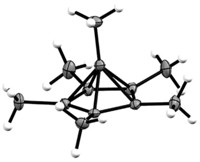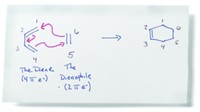Advertisement
Grab your lab coat. Let's get started
Welcome!
Welcome!
Create an account below to get 6 C&EN articles per month, receive newsletters and more - all free.
It seems this is your first time logging in online. Please enter the following information to continue.
As an ACS member you automatically get access to this site. All we need is few more details to create your reading experience.
Not you? Sign in with a different account.
Not you? Sign in with a different account.
ERROR 1
ERROR 1
ERROR 2
ERROR 2
ERROR 2
ERROR 2
ERROR 2
Password and Confirm password must match.
If you have an ACS member number, please enter it here so we can link this account to your membership. (optional)
ERROR 2
ACS values your privacy. By submitting your information, you are gaining access to C&EN and subscribing to our weekly newsletter. We use the information you provide to make your reading experience better, and we will never sell your data to third party members.
Synthesis
Amide With A Twist
The archetypal bicyclic twisted amide 2-quinuclidone is finally synthesized
by Bethany Halford
June 12, 2006
| A version of this story appeared in
Volume 84, Issue 24
With its simple bicyclic skeleton, 2-quinuclidone doesn't look like it would be much of a challenge to make. But thanks to an unusually labile amide linkage, this modest lactam has eluded synthetic chemists for almost 70 years. Now, chemists Brian M. Stoltz and Kousuke Tani have succeeded in synthesizing 2-quinuclidone and have isolated and characterized its tetrafluoroborate salt for the first time (Nature 2006, 441, 699).
Acyclic amides have a reputation as a robust functional group. They typically assume a planar conformation because of electron delocalization between the nitrogen's lone pair of electrons and the adjoining carbonyl group. The amide groups in small bicyclic bridgehead lactams, such as 2-quinuclidone, however, are highly twisted. This twist keeps the nitrogen's electrons from delocalizing and prevents the amide from flattening. In the absence of delocalization, the bridgehead nitrogen is more basic than the typical amide nitrogen, and the functional group is far more reactive.
In the past, chemists have prepared substituted versions of 2-quinuclidone, but the parent molecule's reactivity made its synthesis extremely difficult. Stoltz, a chemistry professor at California Institute of Technology, and postdoc Tani, now with Tokyo-based Ono Pharmaceutical, knew that to generate the compound they would have to find a route other than classical amide formation. They also knew that any contact with water would break open the molecule, so they circumvented an aqueous workup by using reactions involving N2 release as a driving force to construct the bicyclic core.
After a little tinkering, they settled upon the Schmidt-Aubé reaction, wherein an azide intramolecularly attacks a ketone in the presence of HBF4. The resulting intermediate rearranges, eliminating N2 in the process. "That reaction was really the key," Stoltz says. "Without it, this wouldn't have been possible."
"This novel and clever synthetic approach actually exploits the high strain in the 2-quinuclidone system, since the total loss of resonance stabilization makes the N-protonated form accessible, effectively trapping the twisted lactam as a stable salt," comments Arthur Greenberg, a chemistry professor at the University of New Hampshire who has done extensive computational work on 2-quinuclidone.
The information gleaned from isolating and characterizing the compound's tetrafluoroborate salt could provide insights into protein and enzymatic processes, such as amide hydrolysis. In a commentary accompanying the report, Yale University's Harry H. Wasserman writes that Stoltz and Tani's work "represents a milestone in our understanding of the properties" of twisted amides.
Stoltz says he first learned about 2-quinuclidone in graduate school when he house-sat for Wasserman. The Yale professor was among the first chemists to try to synthesize 2-quinuclidone back in 1941, when he was one of Robert B. Woodward's first graduate students. Although Wasserman had to abandon the project to accept a commission in the armed forces, he says the chemical behavior of the compound became important a few years later when Woodward proposed that a twisted amide forms penicillin's core lactam.
"This work will provide an invaluable insight into the nature of amides," Wasserman says of Stoltz and Tani's synthesis, "and concludes a synthetic journey that began nearly 70 years ago."







Join the conversation
Contact the reporter
Submit a Letter to the Editor for publication
Engage with us on Twitter